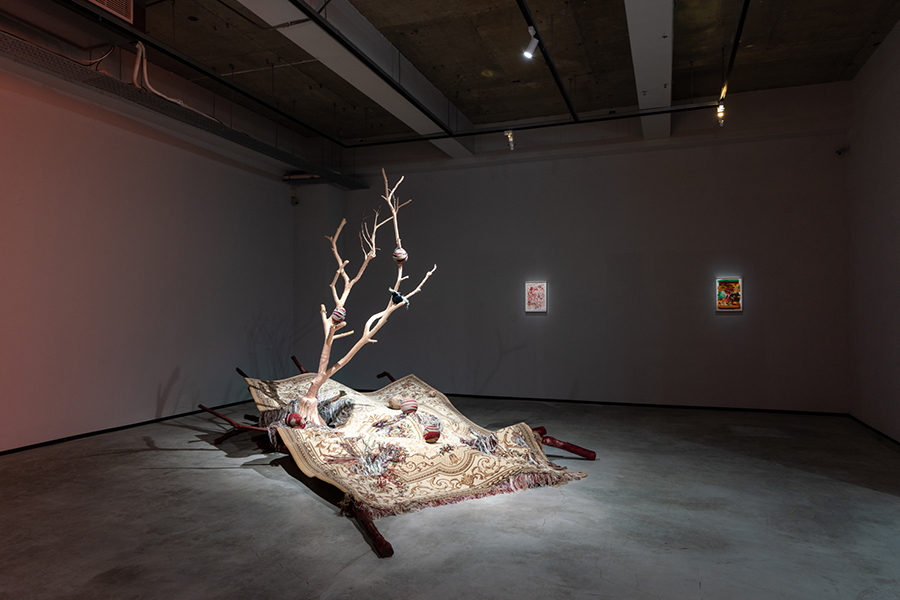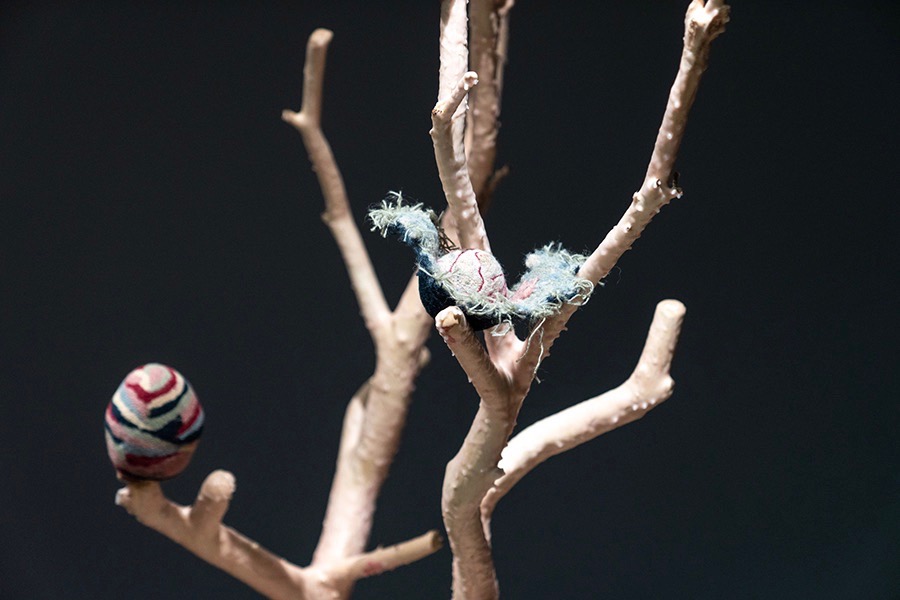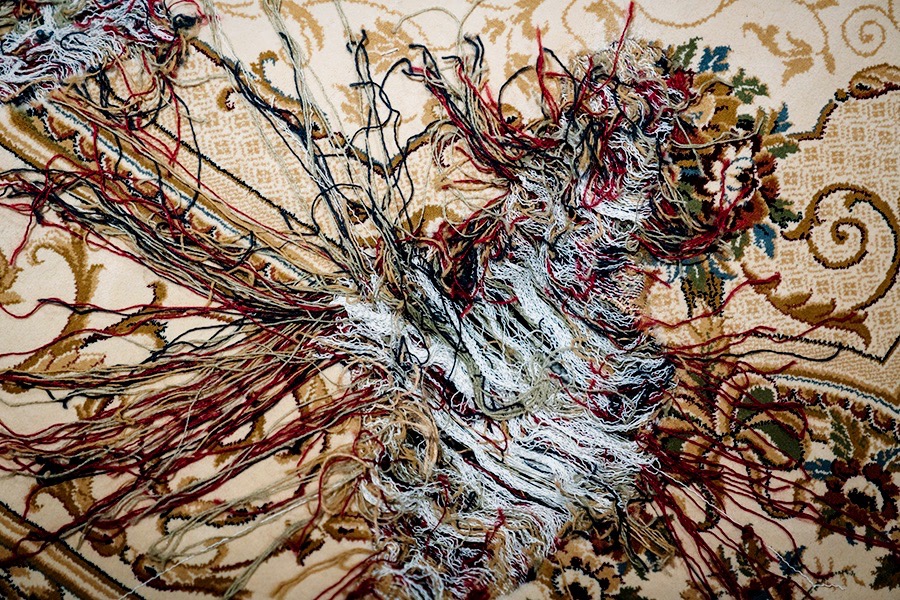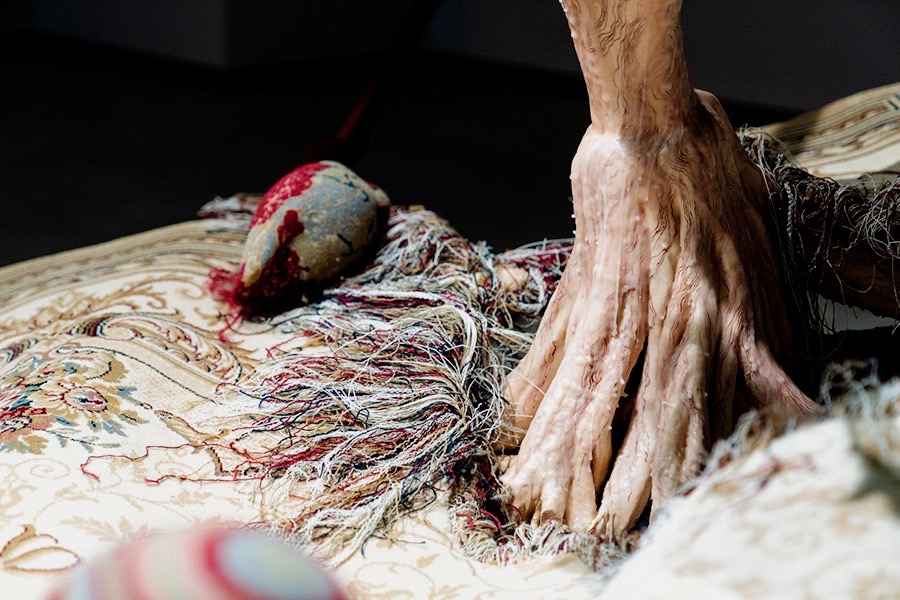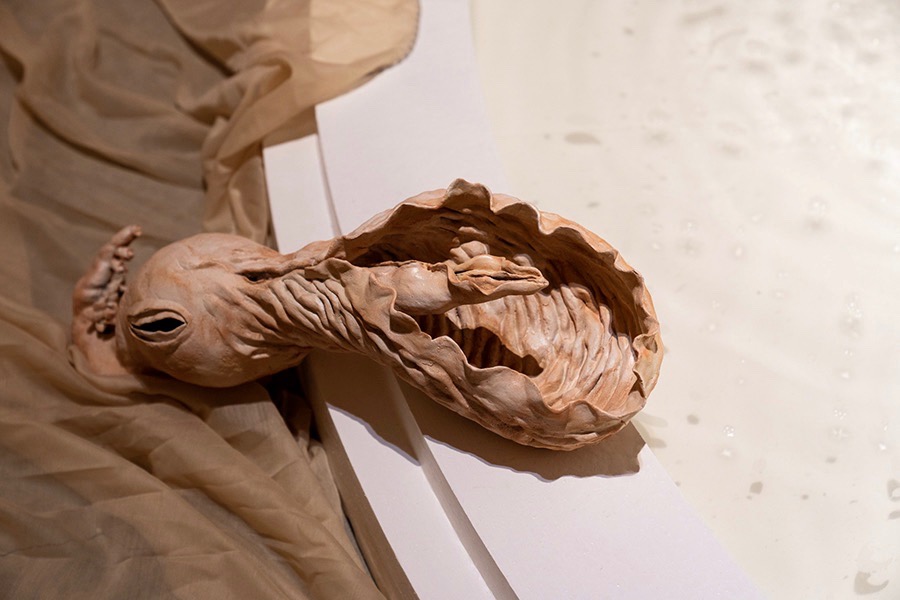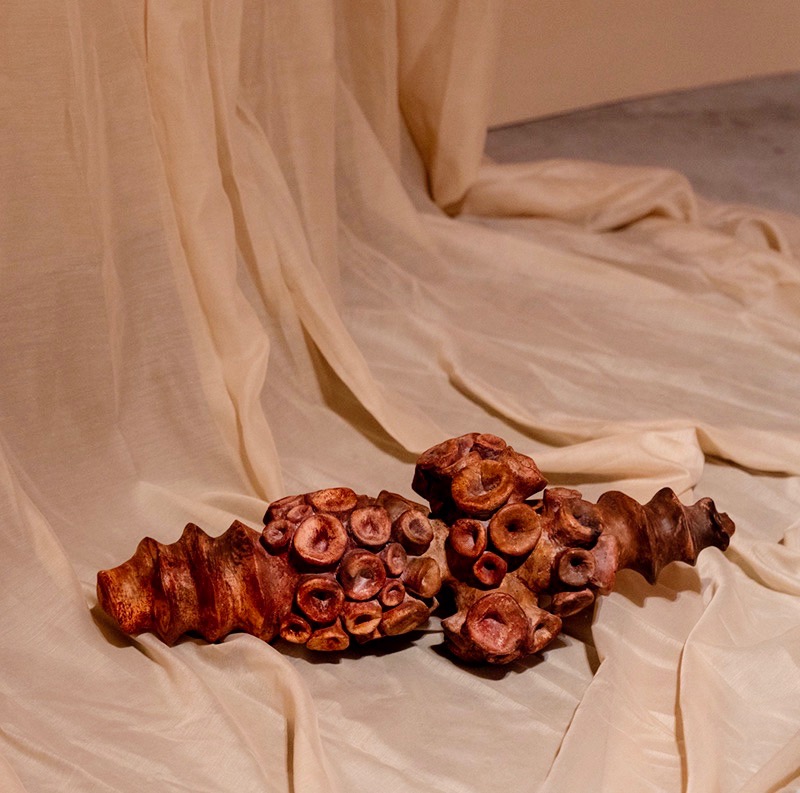How Real Is Yesterday — Kuo Yu -Ping Solo Exhibition
Dates|2019.07.20 – 09.08
Venue│TKG+ Projects
The childhood home of Kuo Yu-Ping’s is one that extends endlessly in her consciousness. Scorching heat and unbearably intense melancholy are always present in her representation of memories of home. How Real Is Yesterday, her first solo exhibition at the TKG+ Projects, inquires into Kuo’s previous body of work through a subtle and complex narrative that revolves around her idea of home. The entire exhibition space embodies her inner landscape, like a park in a dream where each work softly whispers. Double Reading (2019), a video work shot on site at the space, attempts to excavate what lies deep within the artist’s subconscious via images of once-present honor guards, eliciting an inexplicable, haunting state of self-censorship.
Upon her father’s retirement, Kuo and her family left the Zhongxing New Village in Nantou, Taiwan, where she grew up. Stirring a deep attachment to objects and light in her old home, her departure inspired her to search for her roots through art making. In Delay and Pit (2013), memory as an analytic approach of inquiry is used not only for the quest for her identity, but also for the investigation on how structural changes in politics cast an influence on local developments in the course of modernization. The Zhongxing New Village is a delayed projection of KMT’s then “Nanjing Capital Project” back in China. The policy of “infrastructure first” results in significant insufficiency in all other aspects, such as a deserted cultural scene.
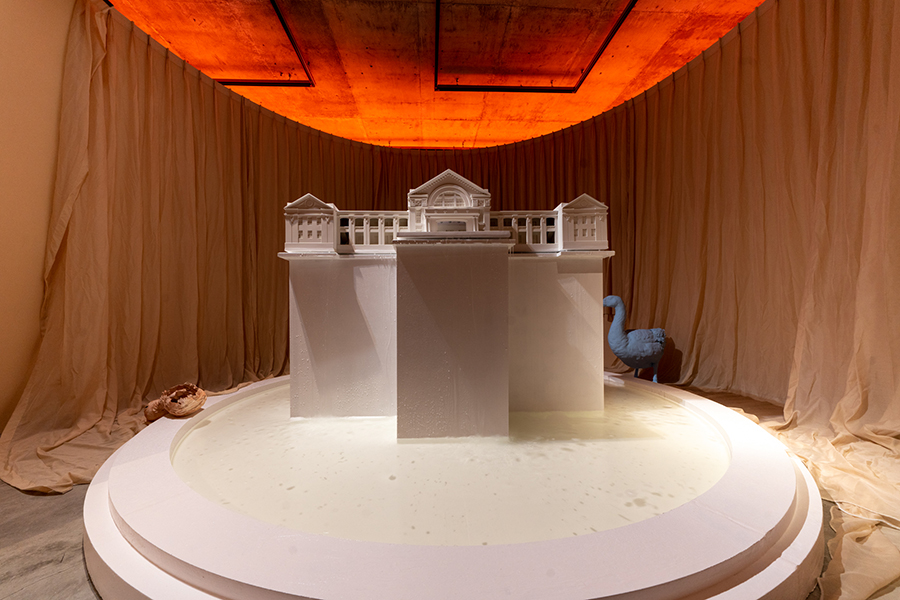
The work, Is Waking Up (2019), can be considered a hybrid representation of Kuo’s memories — pouring rain and wastewater running through a sewage system, on top of which stands the Zhongxing Auditorium. Built in Kuo’s hometown in the1950s, the classical symmetry of this colonial auditorium imitates the shape of a bomber aircraft, equipment that the ROC government received from the US. Much like an allegory of modernity telling the story of a lost plane, it is, too, the artist’s spatial and physical memory of her hometown. Encircled and concealed by wooden walls in the exhibition, the enormous object’s ostensible invisibility closely corresponds to the artist’s state of mind. The white symmetrical architecture with a bomber-aircraft-like shape seen from a bird’s eye view, a symbol accentuated in the grand historical narrative, is now bundled up within a tender, intimate, feminine space.
Through the arrangement of the installation, Kuo attempts to highlight the deep desires of decolonizing subjectivity, as well as the core idea of subjectivity construction. Such desires point right towards the collusion and complicity between subjectivity and larger structural factors. Decolonizing subjectivity must be colonized first. It is not merely about chronological order. Rather, it is because we inhabit in the narrative. More precisely, we live in symbiosis with the narrative codependently.
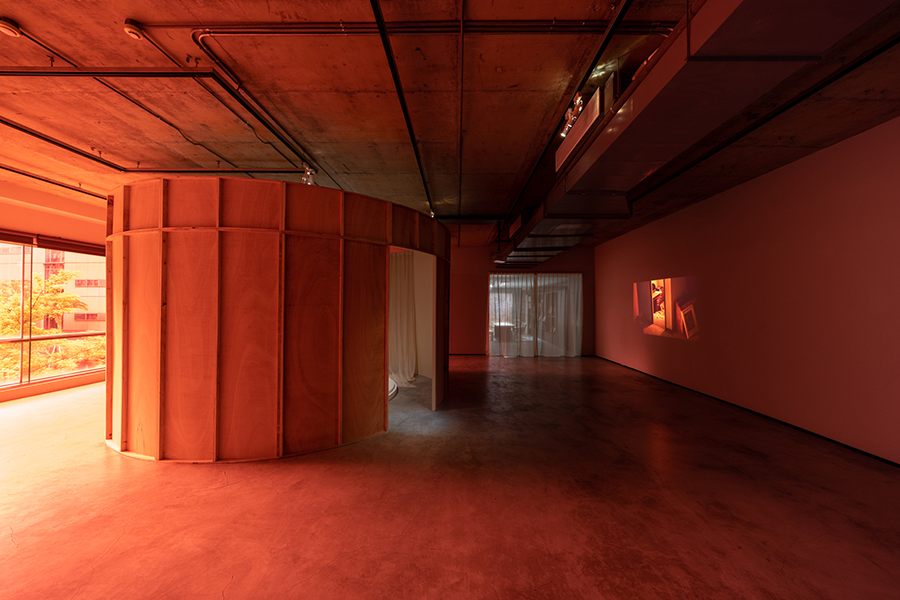
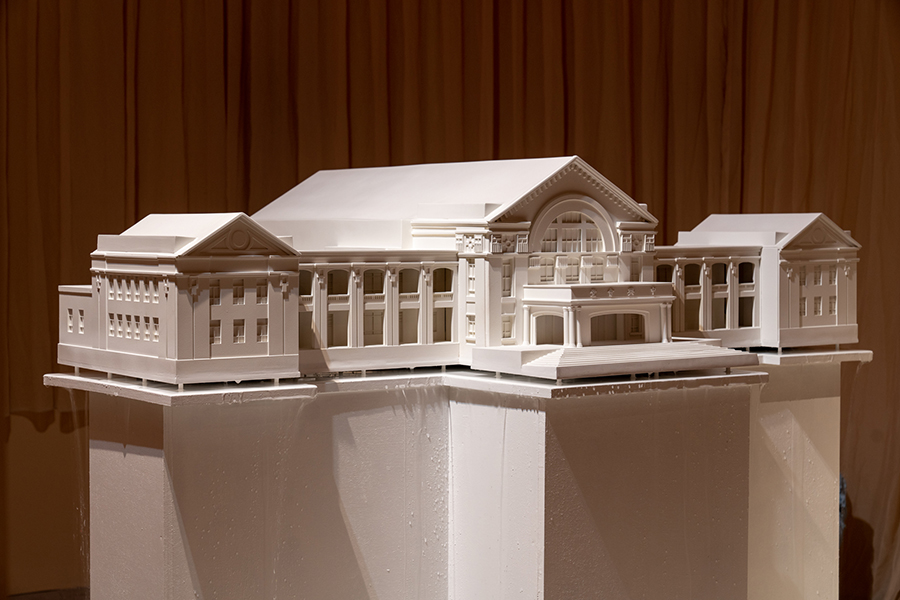
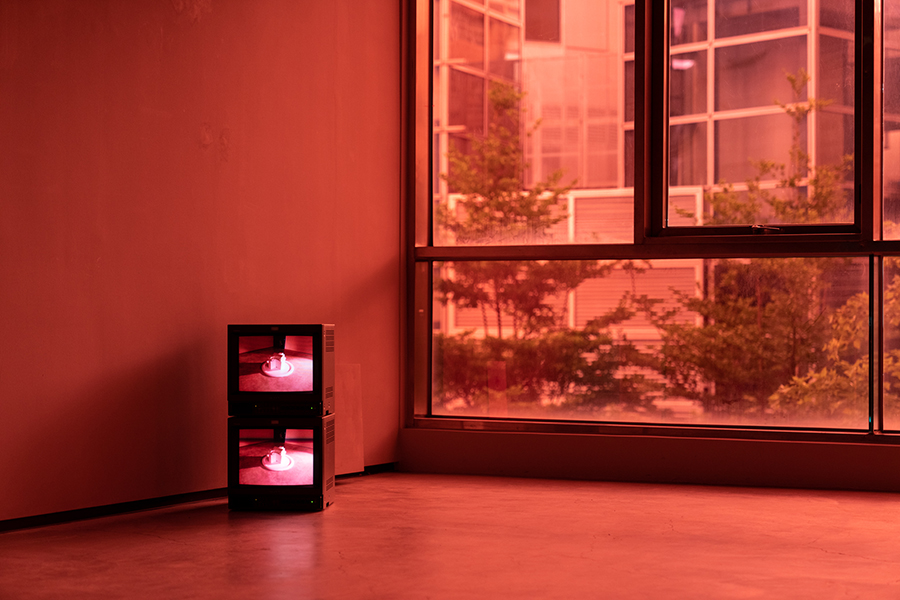
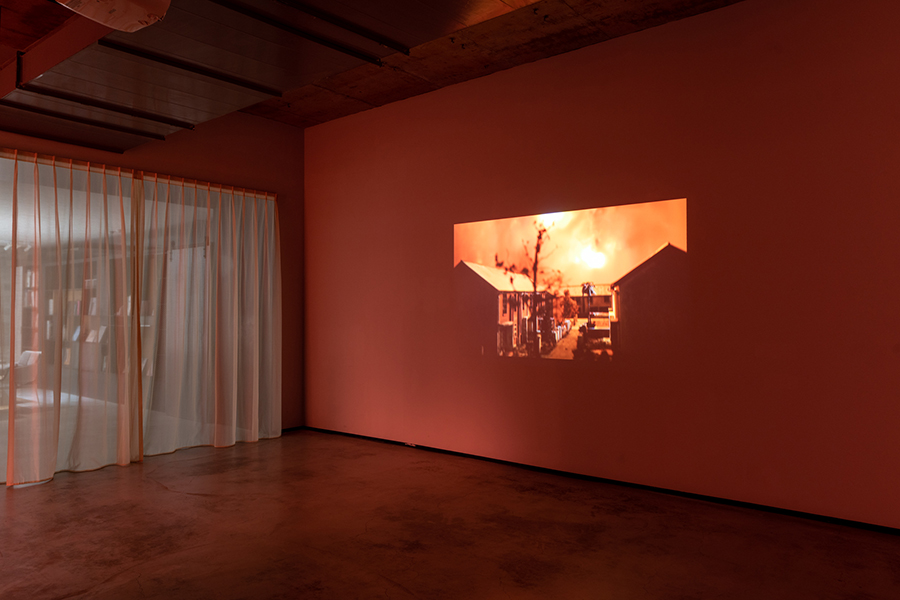
Starting in 2016, Kuo began dismantling a piece of carpet in an extremely prolonged, self-torturing, and neurotic manner. Through repetitive and almost ritualistic manual labor, she carefully pulled the threads apart, loosened the wool, and turned them into numerous solid pom-poms. Over time, her body developed a movement pattern most efficient for the task. She could stay in the same position for hours with both arms being the only body parts that frantically moved. It is as if the whole body was isolated in a vacuum, without growing or aging. Continuing the trajectory of Kuo’s artistic practice, this piece of carpet, as an object echoing the motif of ceaseless labor, is part of the sound installation Sleep, Dream, in a Feverish Land (2018). The work attempts to capture the essence of human existence — perpetually engaged in activities of sleeping, eating, and laboring (both physically and mentally). The sound of dismantling carpet, of eating and sleeping, of emotional fluctuations, portrays the never-ending repetition in human life.
In the space with a whole wall of floor-to-ceiling windows, an ambivalent, unsettled sphere like that of the artist’s inner world is invoked. The installations in the exhibition represent the manifold states of the mind while spurring complex dialectical discussions, readily viewed as Kuo’s memorandum on her investigation of what reality is.
